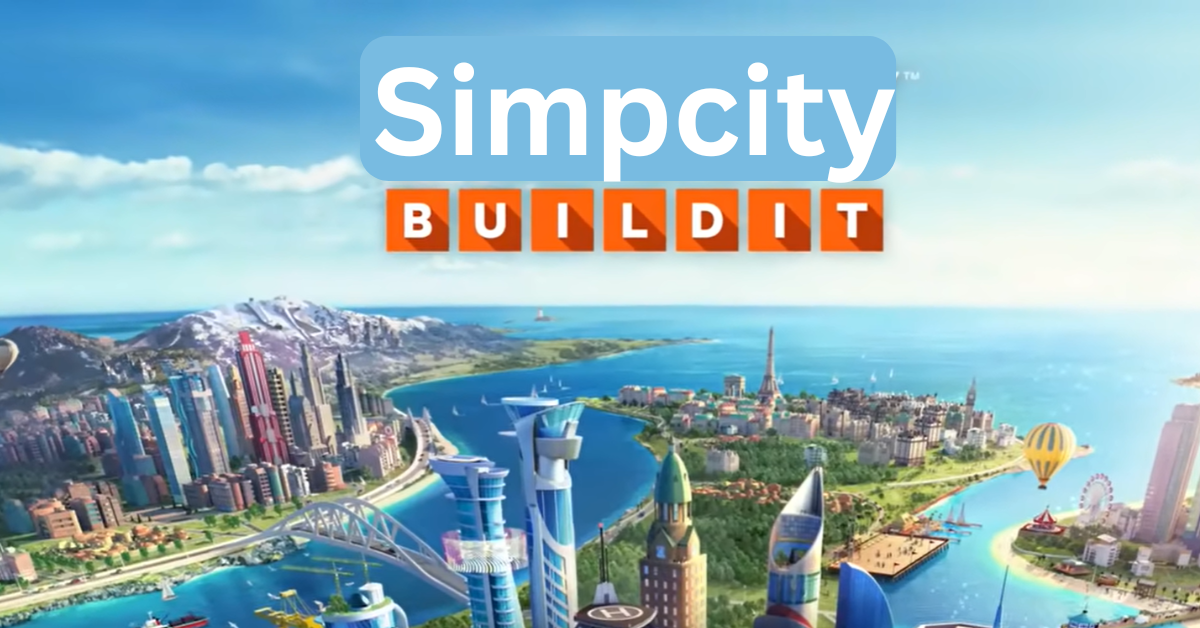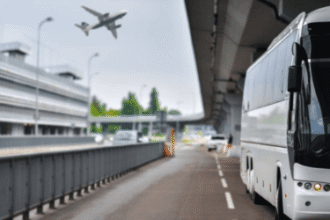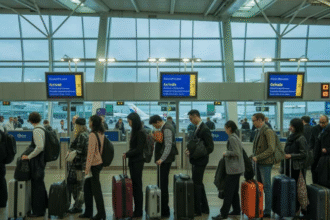Introduction to Simp City Forum
Welcome to the vibrant world of Simp City Forum, where visionaries and community members come together to shape a sustainable future. Imagine a city that thrives not just on economic growth but also on harmony with nature. This forum serves as a hub for those eager to transform urban landscapes into livable, eco-friendly spaces. As environmental challenges grow, cities must evolve too. Join us in exploring how we can cultivate sustainable cities that are both beautiful and resilient while fostering thriving metropolises filled with opportunities for all residents!
The Importance of Sustainable Cities
Sustainable cities are crucial for our future. They offer solutions to pressing challenges like climate change, urbanization, and resource depletion.
As populations grow, the demand for energy and resources increases. Sustainable practices can mitigate this strain on our planet. Cities that prioritize sustainability invest in renewable energy, efficient waste management, and green spaces.
Moreover, these cities enhance the quality of life for their residents. Access to clean air, reliable public transport, and ample recreational areas fosters healthier communities.
Economic resilience is another key aspect. By embracing sustainable development strategies, cities can attract businesses focused on innovation while creating jobs that support environmental stewardship.
In a world facing ecological crises daily, adopting sustainable practices isn’t just beneficial—it’s imperative for survival and progress.
Key Elements of a Sustainable Simp City Forum
A Sustainable Simp City Forum thrives on collaboration. Engaging the community is vital for gathering diverse perspectives and innovative ideas. This inclusivity ensures that everyone has a voice in shaping their urban environment.
Green infrastructure plays a crucial role too. From parks to green roofs, these elements help manage stormwater, reduce heat islands, and enhance biodiversity within the cityscape.
Energy efficiency cannot be overlooked. Utilizing renewable energy sources like solar or wind power drastically cuts down carbon footprints while promoting sustainability.
Transportation options must also prioritize eco-friendliness. Implementing public transport systems, bike lanes, and pedestrian pathways encourages residents to choose greener commuting methods.
Education is key in fostering awareness about sustainable practices. Through workshops and campaigns, citizens become active participants in maintaining an environmentally conscious metropolis.
Simp City Forum’s Approach to Building a Sustainable City
Simp City Forum adopts a multifaceted strategy to build sustainable cities that prioritize both community and environment. They emphasize collaboration among local governments, businesses, and residents to foster innovative solutions.
The forum promotes green infrastructure initiatives, encouraging the use of renewable energy sources like solar and wind power. This approach reduces carbon footprints while enhancing urban resilience.
Community engagement is key. Workshops and forums invite citizens to voice their ideas on sustainability issues. This inclusive spirit nurtures a sense of ownership over local projects.
Additionally, Simp City Forum supports eco-friendly transportation options such as cycling paths, electric vehicle charging stations, and improved public transit systems. These measures not only alleviate traffic congestion but also promote healthier lifestyles.
By integrating technology with ecological practices, Simp City Forum creates smart cities where data-driven decisions lead to efficient resource management. The result is a vibrant urban ecosystem poised for long-term success.
Case Studies: Successful Sustainable Cities and Their Strategies
Cities like Copenhagen and Curitiba offer valuable lessons in sustainability.
Copenhagen is a leader in cycling infrastructure. With extensive bike lanes and rental systems, it encourages residents to choose bicycles over cars. This initiative reduces emissions while promoting health.
Curitiba, on the other hand, revolutionized public transportation with its Bus Rapid Transit system. It connects neighborhoods efficiently and affordably. The city also emphasizes green spaces, improving air quality and providing recreational areas for citizens.
Both cities prioritize renewable energy sources too. Copenhagen aims for carbon neutrality by 2025 through wind power investments. Curitiba integrates solar panels into public buildings, showcasing innovation.
These examples highlight diverse strategies that contribute to sustainable urban living. By studying their approaches, Simp City Forum can inspire communities worldwide to adopt similar practices tailored to local needs.
Thriving Metropolis: Balancing Economic Growth and Environmental Sustainability
A thriving metropolis is often seen as a symbol of progress, but true success lies in finding harmony between economic growth and environmental sustainability. Urban centers face the challenge of expanding industries while preserving natural resources.
Innovative approaches are essential for this balance. Cities can invest in green technologies that reduce emissions while creating jobs. Renewable energy sources like solar and wind power offer sustainable solutions to meet growing demands without compromising the environment.
Moreover, integrating public transport systems minimizes traffic congestion and pollution, enhancing urban life quality. Green spaces within cities provide not just beauty but also improve air quality and promote biodiversity.
Collaboration among businesses, government bodies, and communities fosters an inclusive approach to development. This synergy drives initiatives that protect ecosystems while encouraging economic vitality. It’s about redefining success—where prosperity coexists with responsibility towards the planet.
How Individuals Can Contribute to Creating a Sustainable Simp City Forum
Every person has a role in transforming Simp City Forum into a sustainable haven. Small changes in daily habits can lead to substantial impacts.
Start by reducing waste. Use reusable bags, bottles, and containers. Composting food scraps enriches the soil while minimizing landfill contributions.
Transportation choices also matter. Opt for public transit, cycling, or walking whenever possible. Carpooling not only saves resources but builds community connections.
Engage with local initiatives that promote sustainability. Participate in tree planting events or volunteer for cleanup drives within your neighborhood.
Education plays a vital part too. Share knowledge about eco-friendly practices on social media platforms or within community groups.
Support businesses focused on sustainability by choosing to shop locally and ethically sourced products. This strengthens the local economy while encouraging environmentally responsible practices among entrepreneurs.
Voice your ideas at forums and discussions centered around urban development; grassroots involvement sparks change.
Conclusion
Creating a sustainable Simp City Forum is more than just an ideal—it’s a necessary evolution for our urban landscapes.
The future of cities depends on innovative strategies that prioritize eco-friendliness while enhancing the quality of life. Each initiative contributes to a long-lasting impact, paving the way for healthier environments and communities.
As citizens engage in this journey, their individual actions amplify collective efforts. Every small change counts when aiming for sustainability.
It’s essential to keep pushing boundaries and exploring new ideas. Collaboration between local governments, businesses, and residents fosters a vibrant atmosphere where growth can thrive without compromising ecological integrity.
A commitment to sustainability transforms not only cities but also our mindset towards living harmoniously with nature. Let’s continue this conversation around building better urban spaces together; every voice matters in shaping the future we desire.
FAQs
Creating a sustainable city involves collaboration, innovation, and commitment from everyone. The Simp City Forum plays a vital role in fostering this transformation.
The importance of engaging with communities cannot be overstated. Effective communication channels can help residents voice their concerns and ideas for sustainability initiatives. Encouraging local participation ensures that the needs of all stakeholders are met.
Case studies from around the world showcase diverse strategies for building sustainable cities. Cities like Copenhagen have integrated cycling infrastructure to minimize car traffic, while Singapore utilizes vertical gardens to enhance air quality and green spaces.
Economic growth must align with environmental stewardship for a thriving metropolis. Policies promoting renewable energy not only create jobs but also reduce carbon footprints, demonstrating that economic success does not have to come at the expense of nature.
Individuals can play an active role too—simple actions such as reducing waste, supporting local businesses, or participating in community clean-ups contribute significantly to sustainability goals.
As we move towards our vision of creating impactful changes through platforms like the Simp City Forum, questions might arise about practical steps forward or specific case studies worth exploring further.
FAQs
Q: What is Simp City Forum?
A: Simp City Forum is an interactive platform focused on discussing strategies and solutions for building sustainable urban environments while enhancing community engagement.
Q: How can I get involved in my local Simp City Forum?
A: You can participate by attending meetings or events organized by your local forum chapter or joining discussions online through social media platforms dedicated to urban sustainability topics.
Q: What are some examples of successful sustainable cities?
A: Cities such as Amsterdam and Curitiba serve as models due to their emphasis on public transportation systems and green space integration into urban planning efforts.
Q: How does economic growth fit into sustainable development?
A: A balanced approach allows cities to thrive economically without compromising environmental health; integrating green technologies often leads to job creation while protecting resources for future generations.
Q: Are there any resources available for learning more about sustainability practices?
A: Many organizations offer workshops, webinars, and literature focusing on various aspects of sustainability—from waste reduction techniques at home to larger

















